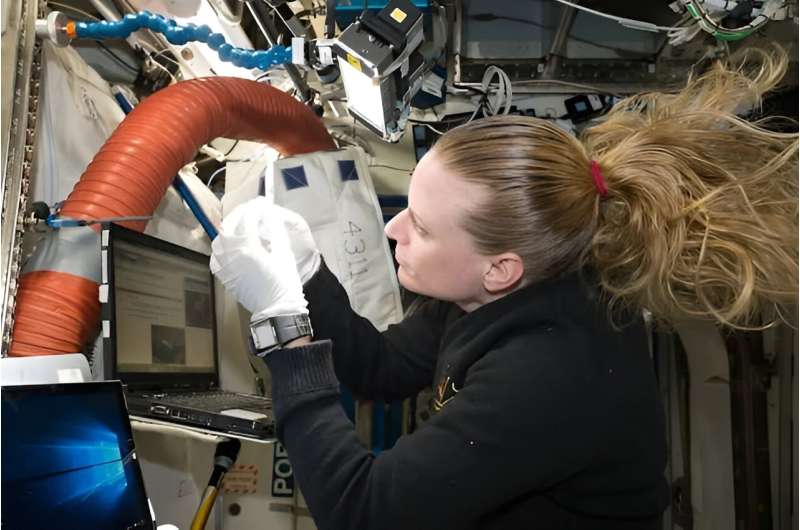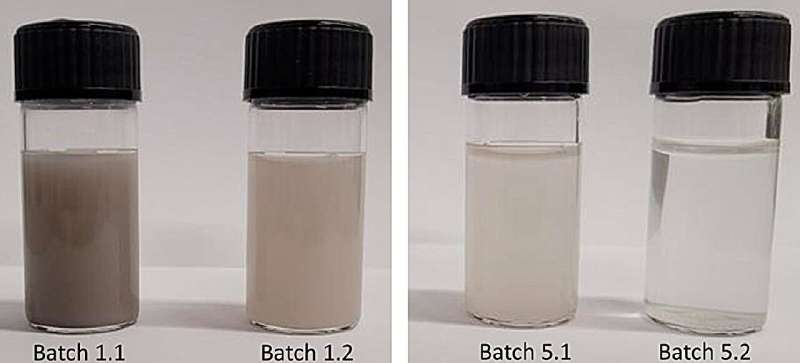Opinion: If we want to settle on other planets, we'll have to use genome editing to alter human DNA
Tuesday, 23 July 2024 15:28
When considering human settlements on the moon, Mars and further afield, much attention is given to the travel times, food and radiation risk. We'll undoubtedly face a harsh environment in deep space and some thinkers have been pointing to genome editing as a way to ensure that humans can tolerate the severe conditions as they venture further into the solar system.
In January, I was fortunate to attend a much-anticipated debate between astronomer royal Lord Martin Rees and Mars exploration advocate Dr. Robert Zubrin. The event at the British Interplanetary Society took on the topic of whether the exploration of Mars should be human or robotic.
In a recent book called The End of Astronauts, Lord Rees and co-author Donald Goldsmith outline the benefits of exploration of the solar system using robotic spacecraft and vehicles, without the expense and risk of sending humans along for the ride.
Moon dust could contaminate lunar explorers' water supply
Tuesday, 23 July 2024 14:27
Water purification is a big business on Earth. Companies offer everything from desalination to providing just the right pH level for drinking water. But on the moon, there won't be a similar technical infrastructure to support the astronauts attempting to make a permanent base there. And there's one particular material that will make water purification even harder—moon dust.
We've reported plenty of times about the health problems caused by the lunar regolith, so it seems apparent that you don't want to drink it. Even more so, the abrasive dust can cause issues with seals, such as those used in electrolyzers to create rocket fuel out of in-situ water resources. It can even adversely affect water purification equipment itself.
Unfortunately, this contamination is inevitable. Lunar dust is far too adhesive and electrostatically charged to be kept completely separate from the machinery that would recycle or purify the water.
Expiring medications could pose challenge on long space missions
Tuesday, 23 July 2024 08:00
Medications used by astronauts on the International Space Station might not be good enough for a three-year journey to Mars. A new study led by Duke Health shows that over half of the medicines stocked in space—staples such as pain relievers, antibiotics, allergy medicines, and sleep aids—would expire before astronauts could return to Earth.
Astronauts could end up relying on ineffective or even harmful drugs, according to the study appearing July 23 in npj Microgravity.
"It doesn't necessarily mean the medicines won't work, but in the same way you shouldn't take expired medications you have lying around at home, space exploration agencies will need to plan on expired medications being less effective," said senior study author Daniel Buckland, M.D., Ph.D., an assistant professor of emergency medicine at Duke University School of Medicine and an aerospace medicine researcher.
Expired medications can lose their strength by a little—or a lot. The actual stability and potency of medications in space compared to Earth remain largely unknown. The harsh space environment, including radiation, could reduce the effectiveness of medications.
Buckland and co-author Thomas E.
Satellite solutions for seamless in-flight internet
Tuesday, 23 July 2024 07:27
In today's connected world, staying online even when travelling at 9000 m is becoming increasingly important. ESA is working to advance in-flight connectivity through satellite technology, ensuring internet access in the air is as seamless as it is on the ground.
Europe sees Ariane 6 launch as an end to its “launcher crisis”
Tuesday, 23 July 2024 04:54

Pentagon’s Arctic strategy emphasizes space and satellite capabilities
Monday, 22 July 2024 18:47
Astroscale unlocks remaining space agency funds to de-orbit OneWeb satellite
Monday, 22 July 2024 15:22

Chief of Space Operations advocates refocus on integrated defense at Global Air, Space Chiefs' Conference
Monday, 22 July 2024 13:36 During a trip to the United Kingdom, U.S. Space Force Chief of Space Operations Gen. Chance Saltzman appeared at the Global Air and Space Chiefs' Conference, delivering a keynote address to a crowd of global leaders, industry partners and academics in the air and space defense industry, July 17.
Titled "Toward Integrated Defense in Space," Saltzman's address began with a discussion on the
During a trip to the United Kingdom, U.S. Space Force Chief of Space Operations Gen. Chance Saltzman appeared at the Global Air and Space Chiefs' Conference, delivering a keynote address to a crowd of global leaders, industry partners and academics in the air and space defense industry, July 17.
Titled "Toward Integrated Defense in Space," Saltzman's address began with a discussion on the NASA Sounding Rocket Launches, Studies Heating of Sun's Active Regions
Monday, 22 July 2024 13:36 Investigators at NASA's Marshall Space Flight Center in Huntsville, Alabama, will use observations from a recently-launched sounding rocket mission to provide a clearer image of how and why the Sun's corona grows so much hotter than the visible surface of Earth's parent star. The MaGIXS-2 mission - short for the second flight of the Marshall Grazing Incidence X-ray Spectrometer - launched from W
Investigators at NASA's Marshall Space Flight Center in Huntsville, Alabama, will use observations from a recently-launched sounding rocket mission to provide a clearer image of how and why the Sun's corona grows so much hotter than the visible surface of Earth's parent star. The MaGIXS-2 mission - short for the second flight of the Marshall Grazing Incidence X-ray Spectrometer - launched from W Analyzing Consciousness in AI Systems Through the Free Energy Principle
Monday, 22 July 2024 13:36 The exploration of consciousness in artificial systems can take various approaches. One approach focuses on the likelihood of current AI systems achieving consciousness and identifying the requirements needed to enhance this likelihood. Another approach, as taken by researcher Wanja Wiese, examines which types of AI systems are unlikely to become conscious and aims to prevent the unintended crea
The exploration of consciousness in artificial systems can take various approaches. One approach focuses on the likelihood of current AI systems achieving consciousness and identifying the requirements needed to enhance this likelihood. Another approach, as taken by researcher Wanja Wiese, examines which types of AI systems are unlikely to become conscious and aims to prevent the unintended crea Top official in China's Rocket Force investigated for corruption: state media
Monday, 22 July 2024 13:36 A top Chinese official in Beijing's secretive Rocket Force has been placed under investigation for corruption, state media said, deepening a crackdown on alleged graft in the military.
Sun Jinming was kicked out of the ruling Communist Party and is under investigation for "grave violations of party discipline and laws", state news agency Xinhua said Thursday, using a common euphemism for gra
A top Chinese official in Beijing's secretive Rocket Force has been placed under investigation for corruption, state media said, deepening a crackdown on alleged graft in the military.
Sun Jinming was kicked out of the ruling Communist Party and is under investigation for "grave violations of party discipline and laws", state news agency Xinhua said Thursday, using a common euphemism for gra 






